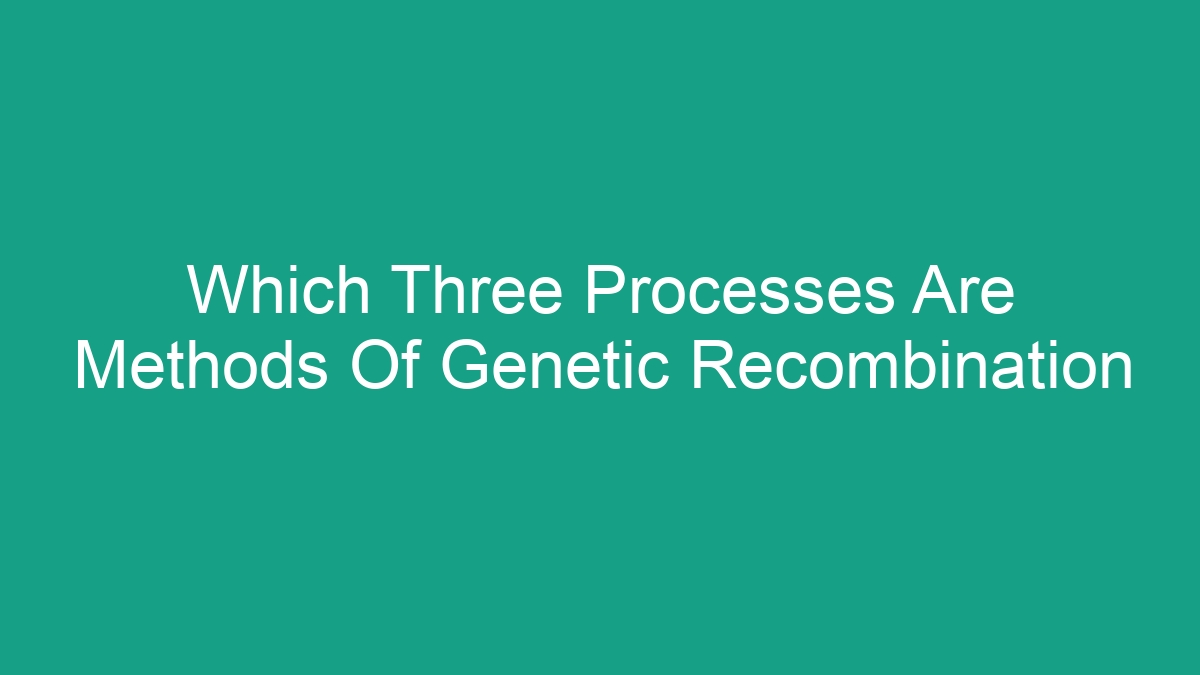
Genetic recombination is the process by which genetic material is exchanged between different organisms or different parts of the same organism’s DNA. This process plays a crucial role in creating genetic diversity and is essential for evolution and the survival of species. There are three main methods of genetic recombination, each with its own unique mechanisms and outcomes.
1. Crossing Over
Crossing over is a key process that occurs during meiosis, the type of cell division that produces gametes (sperm and egg cells) in sexually reproducing organisms. During crossing over, maternal and paternal chromosomes pair up and exchange genetic material. This results in the creation of new combinations of genes on a single chromosome, enhancing genetic diversity. The process of crossing over occurs in four main steps:
- Homologous chromosomes pair up during prophase I of meiosis.
- Sections of the chromatids are exchanged between homologous chromosomes, resulting in the formation of recombinant chromosomes.
- The exchanged sections are then sealed, creating chromosomes with a unique genetic composition.
- Finally, the paired chromosomes separate during anaphase I, and the resulting gametes contain a mixture of genetic material from both parents.
2. Transformation
Transformation is a process in which a cell takes up genetic material from its environment and incorporates it into its own DNA. This mechanism is commonly observed in bacteria, where it serves as a means of acquiring new genetic traits, such as antibiotic resistance. The process of transformation involves the following steps:
- A donor cell releases genetic material, typically in the form of DNA fragments, into the surrounding environment.
- A recipient cell takes up the free-floating DNA and incorporates it into its own genome through recombination.
- The integrated genetic material can then be expressed, leading to the acquisition of new traits by the recipient cell.
3. Conjugation
Conjugation is a method of genetic recombination that occurs in certain bacteria and other single-celled organisms. During conjugation, genetic material is transferred directly from one cell to another through a physical connection, typically a tube-like structure called a pilus. The process of conjugation can be broken down into several key steps:
- A donor cell forms a pilus and establishes contact with a recipient cell.
- The donor cell then transfers a copy of its genetic material, often in the form of a plasmid, to the recipient cell through the pilus.
- The recipient cell integrates the transferred genetic material into its own genome through recombination, leading to the acquisition of new traits.
Importance of Genetic Recombination
Genetic recombination plays a crucial role in evolution and the survival of species. By creating new combinations of genes and promoting genetic diversity, recombination allows organisms to adapt to changing environments and challenges. It also serves as a mechanism for the spread of advantageous traits, such as antibiotic resistance in bacteria, and contributes to the overall health and resilience of populations. Understanding the processes of genetic recombination is therefore essential for studying the mechanisms of evolution and the genetic diversity of living organisms.
Conclusion
In summary, genetic recombination encompasses several key processes that contribute to the exchange and integration of genetic material. Crossing over, transformation, and conjugation are the three primary methods of genetic recombination, each with its own unique mechanisms and outcomes. These processes play a critical role in creating genetic diversity, promoting evolution, and facilitating the adaptation and survival of species. By understanding the intricacies of genetic recombination, scientists can gain insight into the mechanisms driving genetic diversity and evolutionary change, ultimately leading to a better understanding of the natural world.



